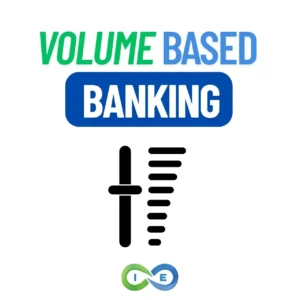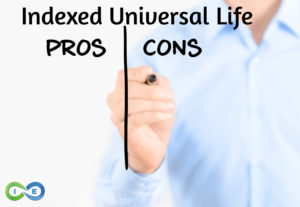Table of Contents
Introduction to Whole Life Insurance Dividends
While many people purchase life insurance for its death benefit protection, whole life insurance offers additional benefits, such as tax-deferred savings and potential dividend payments. In an era of economic uncertainty, understanding whole life insurance dividend performance during inflation is crucial for maximizing your financial strategy.
Participating whole life insurance policies, offered by mutual life insurance carriers, allow policyholders to receive dividends, boosting whole life insurance cash value growth with dividends. This article explores how these dividends perform, especially during inflationary periods, and compares dividend-paying whole life insurance vs. term insurance during inflation.
Key Benefit
Does whole life insurance protect against inflation? Dividend-paying whole life insurance can provide a hedge against inflation through tax-deferred cash value growth and potential dividend payments, which may outpace rising costs over time.
What is Whole Life Insurance?
Whole life insurance is a type of permanent life insurance that provides a fixed death benefit and a cash value component that grows tax-deferred. Unlike term insurance, whole life policies have fixed premiums and become paid-up over time, meaning no further premiums are required. However, not all whole life policies are identical.
Mutual life insurance companies, where policyholders are part-owners, often offer participating whole life insurance that pays dividends. These dividends can enhance cash value growth, providing uninterrupted compound interest growth.
Whole Life vs. Term Insurance During Inflation
| Feature | Whole Life Insurance | Term Insurance |
|---|---|---|
| Duration | Lifetime coverage | Fixed term (e.g., 10, 20 years) |
| Cash Value | Accumulates tax-deferred cash value | No cash value |
| Dividends | Potential dividends in participating policies | No dividends |
| Inflation Protection | Cash value and dividends may hedge inflation | No inflation protection |
| Premiums | Higher, fixed premiums | Lower, may increase upon renewal |
See Whole life vs Term Life for more.
Understanding Dividends in Whole Life Insurance
Life insurance dividends are a portion of the insurer’s profits returned to policyholders as a refund of overpaid premiums. Unlike stock dividends, these are typically tax-free and can be received in several ways:
- Cash Payment: Direct payment to the policyholder.
- Cash Value Addition: Added to the policy’s cash value for enhanced growth.
- Premium Reduction: Used to offset premium costs.
- Additional Coverage: Purchases more insurance coverage.
- Loan Repayment: Pays off policy loans.
Dividends depend on factors like the insurer’s investment performance, interest rates, and new policy sales. While not guaranteed, many mutual companies offering whole life insurance have paid dividends for over 100 years.
Real-World Example: Nelson Nash
Nelson Nash, creator of the Infinite Banking Concept, purchased a whole life policy in 1959 for $388 annually. By 2005, the policy’s cash value grew by $800, and dividends reached $4,200, totaling $5,000 in growth—outpacing inflation significantly.
How Inflation Affects Dividends
Inflation, a steady rise in prices, impacts the economy and financial instruments differently. The U.S. has averaged 3.2% annual inflation since the Great Depression, with periods of double-digit inflation and deflation. During high inflation, whole life insurance dividends may be affected as follows:
- Reduced Policy Sales: High inflation may decrease new policy purchases, impacting insurer profits and dividends.
- Higher Interest Rates: Rising rates can increase bond yields, potentially boosting insurer investments and dividends.
- Lower Liabilities: Higher rates reduce the present value of insurer liabilities, freeing capital for investments.
New Research Data (2025): According to a 2024 study by the Life Insurance Marketing and Research Association (LIMRA), mutual life insurers maintained dividend payouts during 2022–2023 inflationary spikes (4–7%), with average dividend rates of 5.5–7%, compared to 5–8% in lower inflation periods (2010–2020). This stability highlights whole life’s resilience.
Historical Dividend Performance
Whole life dividends peaked in the early 1980s when interest rates hit 20–21%. Since then, rates have fluctuated between 5–8%, correlating with inflation trends.
| Year | MassMutual | New York Life | Northwestern Mutual | Penn Mutual | Lafayette Life | Guardian Life |
|---|---|---|---|---|---|---|
| 2025 | 6.4 | N/A | 5.5 | 6.12 | 5.75 | 6.1 |
| 2024 | 6.1 | 6 | 5.15 | 6 | 5.3 | 5.9 |
| 2023 | 6 | 5.8 | 5 | 5.75 | 5.2 | 5.75 |
| 2022 | 6 | 5.8 | 5 | 5.75 | 5.2 | 5.65 |
| 2021 | 6 | 5.8 | 5 | 5.75 | 5.2 | 5.65 |
| 2020 | 6.2 | 6.1 | 5 | 6.1 | 5.2 | 5.65 |
| 2019 | 6.4 | 6 | 5 | 6.1 | 5.1 | 5.85 |
| 2018 | 6.4 | 6.1 | 4.9 | 6.34 | 5.1 | 5.85 |
| 2017 | 6.7 | 6.3 | 5 | 6.34 | 5.1 | 5.85 |
| 2016 | 7.1 | 6.2 | 5.45 | 6.34 | 5.1 | 6.05 |
| 2015 | 7.1 | 6.2 | 5.6 | 6.34 | 5.1 | 6.05 |
| 2014 | 7.1 | 6 | 5.6 | 6.34 | 5.1 | 6.25 |
| 2013 | 7 | 5.9 | 5.6 | 6.34 | 5.25 | 6.65 |
| 2012 | 7 | 5.8 | 5.85 | 6.34 | 5.45 | 6.95 |
| 2011 | 6.85 | 6.11 | 6 | 6.34 | 5.95 | 6.85 |
| 2010 | 7 | 6.11 | 6.15 | 6.34 | 6.5 | 7 |
| 2009 | 7.6 | 6.14 | 6.5 | 6.34 | 6.5 | 7.3 |
| 2008 | 7.9 | 6.79 | 7.5 | 6.34 | 6.5 | 7.25 |
| 2007 | 7.5 | 6.79 | 7.5 | 6.3 | 6.5 | 6.75 |
| 2006 | 7.4 | 6.79 | 7.5 | 6.3 | 6.5 | 6.5 |
| 2005 | 7 | 6.79 | 7.5 | 5.74 | 6.5 | 6.75 |
| 2004 | 7.5 | 6.79 | 7.7 | 5.74 | 6.5 | 6.6 |
| 2003 | 7.9 | 6.79 | 8.2 | 6.48 | 7.75 | 7 |
| 2002 | 8.05 | 7.32 | 8.6 | 7.4 | 8.35 | 8 |
Unlike stocks or mutual funds, whole life cash value avoids market losses, ensuring steady growth. For example:
| End of Year | Gain or Loss | Value of Account |
|---|---|---|
| 1 | 10% | $1,000.00 |
| 2 | (-10%) | $990.00 |
| 3 | 10% | $1,089.00 |
| 4 | (-10%) | $980.10 |
| 5 | 10% | $1,078.11 |
| 6 | (-10%) | $970.30 |
| 7 | 10% | $1,067.33 |
| 8 | (-10%) | $960.60 |
| 9 | 10% | $1,056.66 |
| 10 | (-10%) | $950.99 |
Source: The Retirement Miracle by Patrick Kelly.
The following table illustrates the recovery needed after investment losses:
| % Loss of Capital | % Gain Required to Recoup the Loss |
|---|---|
| 10% | 11.11% |
| 20% | 25% |
| 30% | 42.85% |
| 40% | 66.66% |
| 50% | 100% |
| 60% | 150% |
| 70% | 233% |
| 80% | 400% |
| 90% | 900% |
| 100% | Broke |
Leveraging Policy Loans for Growth
Whole life insurance allows policyholders to take policy loans against cash value, a strategy called the Asset Multiplier Blueprint. Loans can fund investments like real estate, potentially outpacing inflation.
- Borrow against cash value at low rates.
- Invest in high-yield opportunities.
- Outperform loan interest for additional wealth.
- Cash value grows despite loans, assuming premiums are paid.
Advantages include no credit checks, flexible repayment, and potential tax benefits. For example, a policy loan for a rental property can generate income exceeding loan costs.
Is Whole Life Insurance Right for You?
Whole life insurance isn’t for everyone. Life events like marriage or divorce may require policy adjustments. Consult a professional to align a policy with your goals. Contact Insurance and Estates at (877) 787-7558 or comment below for a free consultation.
Unlock the Power of Dividend-Paying Whole Life Insurance
Curious about how whole life insurance dividend performance during inflation can enhance your financial strategy? Our independent advisory team offers a personalized analysis to determine if dividend-paying whole life insurance is the right fit for your goals.
- ✓ Get a customized report on how whole life insurance can protect against inflation
- ✓ Compare dividend-paying whole life to term insurance and other investment options
- ✓ Explore the tax-deferred growth potential of cash value and dividends
- ✓ Understand the long-term benefits and risks of participating policies
Schedule your complimentary 30-minute whole life insurance consultation today and discover how to leverage dividends for financial security.
No obligation. No pressure. Just expert insights to help you decide if dividend-paying whole life insurance aligns with your financial future.
Frequently Asked Questions
Are whole life insurance dividends guaranteed during inflation?
No, dividends are not guaranteed, even during inflation. They depend on the insurer’s financial performance, interest rates, and policy sales. However, many mutual insurers have paid dividends consistently for decades, even in high-inflation periods.
How do policy loans affect dividends during high inflation?
Policy loans do not directly reduce dividends, as dividends are based on insurer performance. However, unpaid loan interest may reduce cash value growth, indirectly affecting the policy’s overall performance.
How do dividends compare to premium costs during inflation?
During high inflation, dividends may grow due to higher interest rates, sometimes exceeding premium costs. For example, Nelson Nash’s policy yielded dividends 10 times his premium by 2005, showcasing strong performance.
Which mutual companies have the best dividend history during inflation?
Companies like MassMutual, Penn Mutual, and Guardian have strong dividend histories, often maintaining payouts during inflationary periods.



